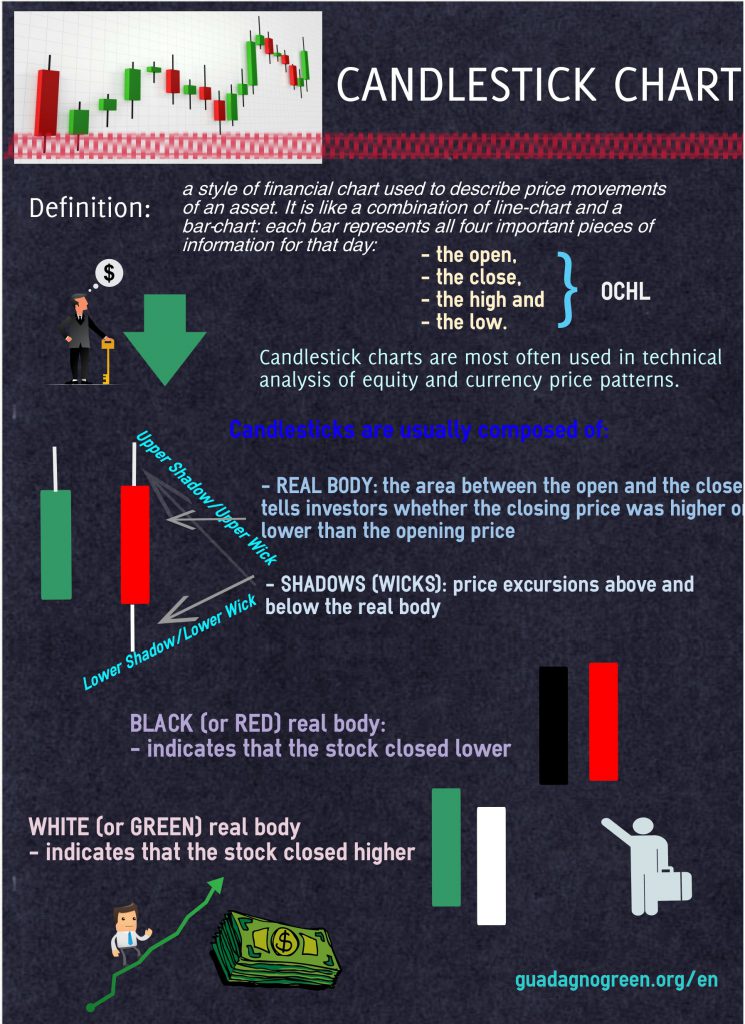Binary Options Trading can provide important amounts of financial satisfaction. Although considering the high risks related to this activity, it is necessary to have the right knowledge and experience. It is fundamental to know the main indices and to be able to read the charts in order to recognize the market trends and the best investment opportunities.
A type of chart that is widely used in binary option trading and that better describes the price movements are the Candlestick charts, also called Japanese Candlestick charts.
What is a Candlestick Chart?
A candlestick chart is a style of financial chart used to describe price movements of an asset.
It is like a combination of a line-chart and a bar-chart: each bar represents all four important pieces of information: the open, the close, the high and the low.

Candlestick charts are most often used in technical analysis of equity and currency price patterns.
Candlestick charts are thought to have been developed in the 18th century by Munehisa Homma, Japanese rice trader. They were introduced to the Western world by Steve Nison in his book, Japanese Candlestick Charting Techniques.
Candlesticks are usually composed of the body (black or white/red or green), and an upper and a lower shadow (also called wick): the area between the open and the close is called the real body, price excursions above and below the real body are called shadows.
The wick illustrates the highest and lowest traded prices of an asset during the time interval represented. The body illustrates the opening and closing trades. If the asset closed higher than it opened, the body is white or green, with the opening price at the bottom of the body and the closing price at the top. If the security closed lower than it opened, the body is black or red, with the opening price at the top and the closing price at the bottom. It is not necessary for a candlestick to have either a body or a wick.
Candlestick patterns
There are also important candlestick patterns. Every pattern represents the market trend in a particular time period. There are bullish patterns and bearish patterns. The bullish patterns indicate that an upward price movement is expected. The bearish pattern means that most investors expect a downward price movement. There are reversal candlestick patterns and continuation candlestick patterns.
To be continued…
If you find this article useful, please comment below and share it with your friends!
More interesting stuff to come ?


very Good article keep on blogging for more updates thank you
Thank you for your feedback! Much appreciated!
Let us have a discussion some time with regards to traderush scam and just what we’re able to do to helps it be more effective for everyone.
As far as I know traderush is not regulated, and this alone should prevent people from investing.
Hi thanks for sharing
You’re welcome!